The English translation of a prominent work on Dalit food practices adds new questions about the specificity of Dalit experiences and the visualising of marginality through mainstream languages to the issue of food politics
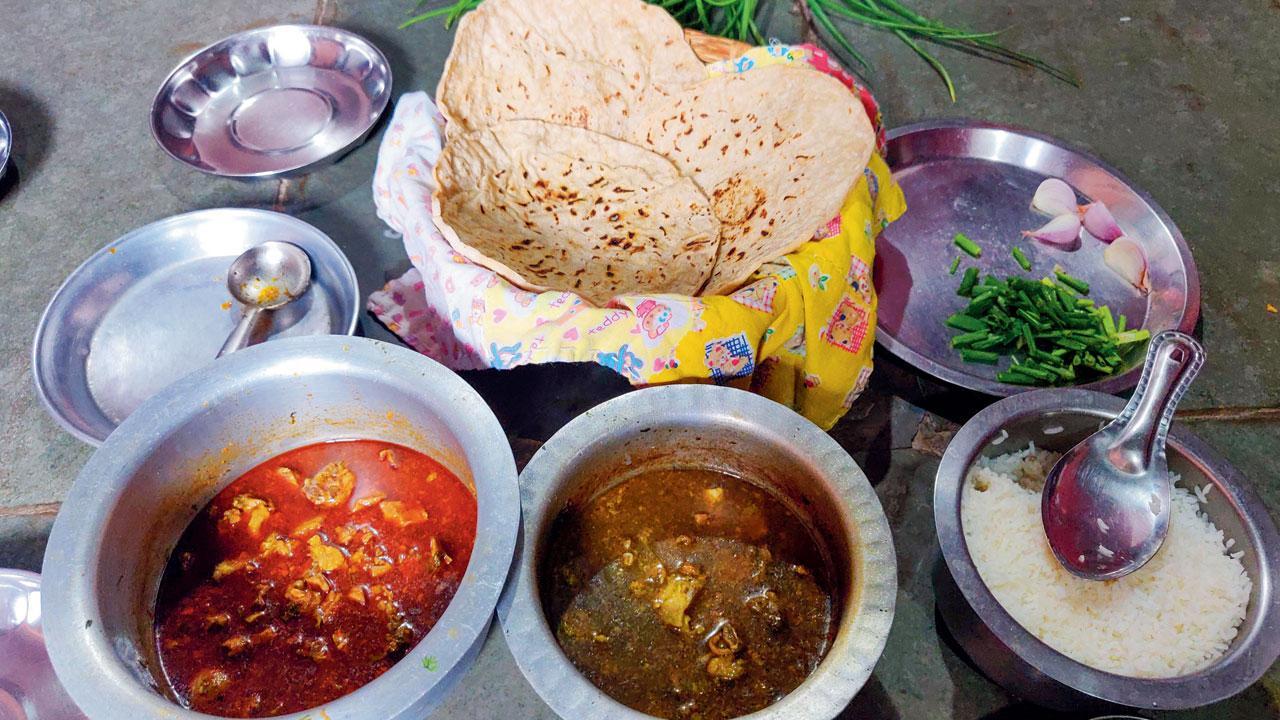
Dalit Kitchens of Marathwada has a certain freewheeling quality where recipes appear in between stories and descriptions of rituals. Barbat and alani mutton curries were two items that the author’s mother had prepared for the translator when the latter went to visit them. PIC/KUNAL VIJAYAKAR
"A lot of the Marathi words we use in the village can’t be found in a Marathi dictionary,” writer Shahu Patole tells us over a phone call. Words like ‘boti’ (small pieces of meat), ‘chaani’ (dried meat chunks) or ‘lakuti’ (animal blood preparation) are concepts, he says, whose contexts need to be understood. Hence when in May 2021, Bhushan Korgaonkar was brought in to work on an English translation of Patole’s 2015 Marathi publication, the Mumbai-based director and theatre producer travelled to Patole’s village in Osmanabad to familiarise himself with this region- and community-specific vocabulary about farming and cooking, and get acquainted with the agricultural equipment, vegetables and animal parts that featured in its food practices. Patole’s original work titled Anna He Apoorna Brahma, which was the first book to document Dalit food history through the culinary traditions of the Maharashtrian Mahar (the Mahars became neo-Buddhists in 1956) and Mang communities, is about 230 pages long. The new English translation, Dalit Kitchens of Marathwada (HarperCollins India), due to the elucidations and an extensive glossary, is more than a hundred pages longer.
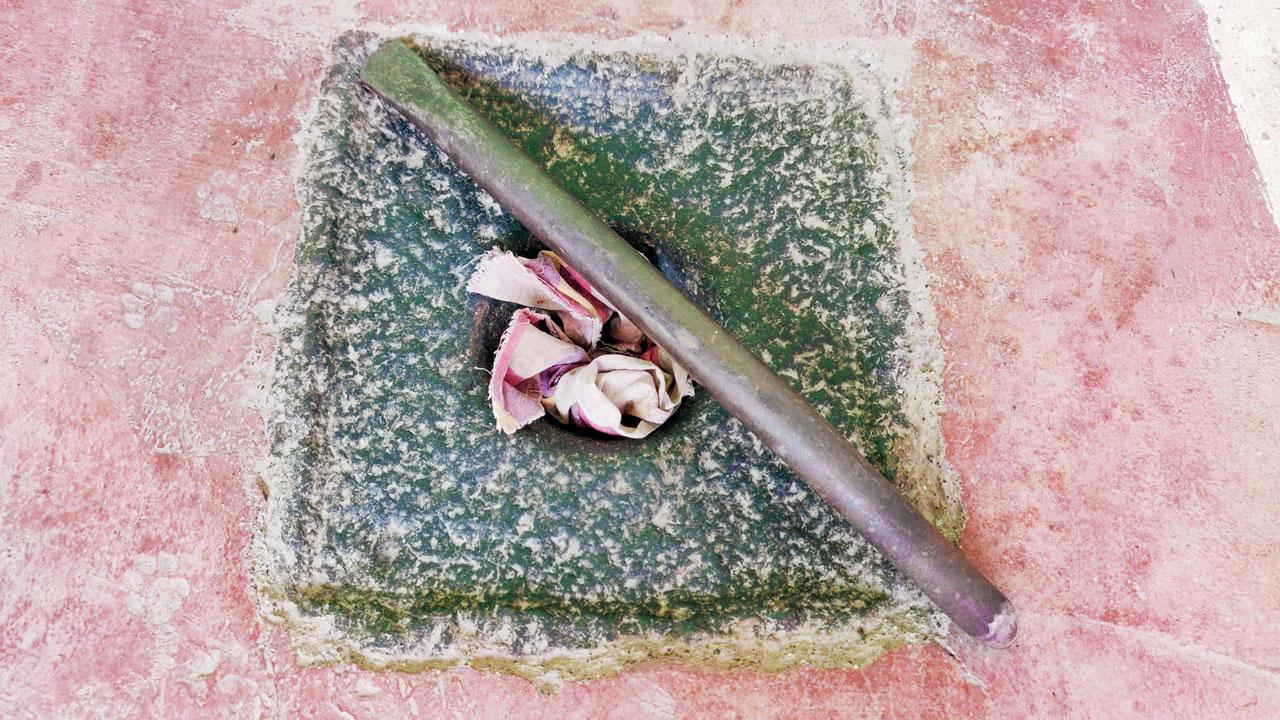
Ukhal, a large and heavy mortar carved out of a monolithic stone used for grinding dry items like chutney powders, dried chillies and salt crystals. A stone or iron pestle is used to pound things in it. A piece of cloth is always left in the ukhal to keep dust and insects away and clean it before every use
ADVERTISEMENT
Dr Prashant Ingole, lecturer at the Indian Institute of Science Education and Research Mohali, who has specialised in Dalit studies and cultural politics, draws attention to this problem of translating specificity, speaking instead of the essential ‘untranslatability’ of the words and world of the Dalit in English. “The English language is not related to the Dalit experiences of marginality. Words of any [regional] language come from their rooted experiences and have no established relationship with the particular vocabulary in English as such,” he notes. “Words are constructed through lived experiences and geographical, cultural and sociological contexts. When translated into English, there are no words to understand the Dalit world and the specificity of that particular meaning.”
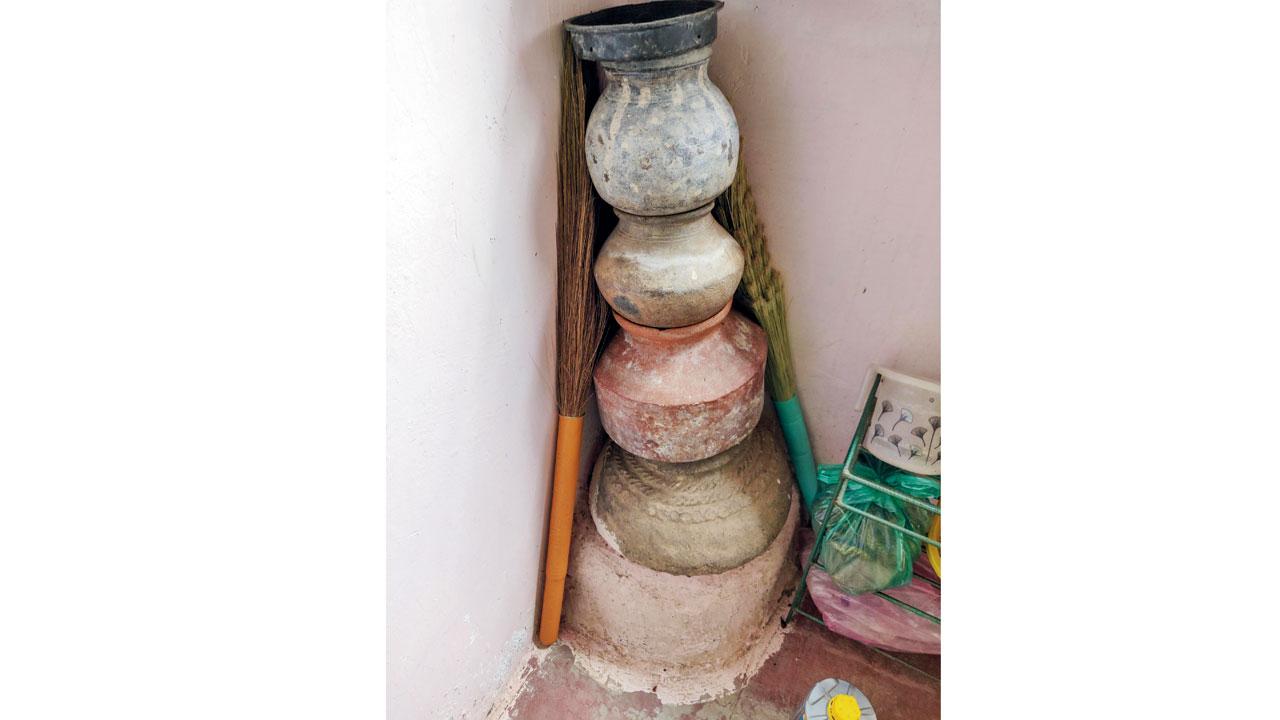
Mud vessels are used for storing food grains
But he admits that translations enable a recognition of marginalised authorship, which is otherwise wholly invisible in mainstream language discourse, and thus allow readers to discover the circumstances in which a text was written. In Anna He Apoorna Brahma, Patole wrote about how Dalits don’t readily come forward to talk about their food culture due to the shame attached to their food history and practices. “If leftover, stale, partially eaten and discarded, half-cooked, scorched, overcooked, inferior, rotten food is tamasic [sinful], why would anyone eat it? The fact that someone eats it suggests that they don’t have any other option,” he wrote, questioning both the scriptural use of food to maintain social divisions and the idea that diet determined behaviour and character.
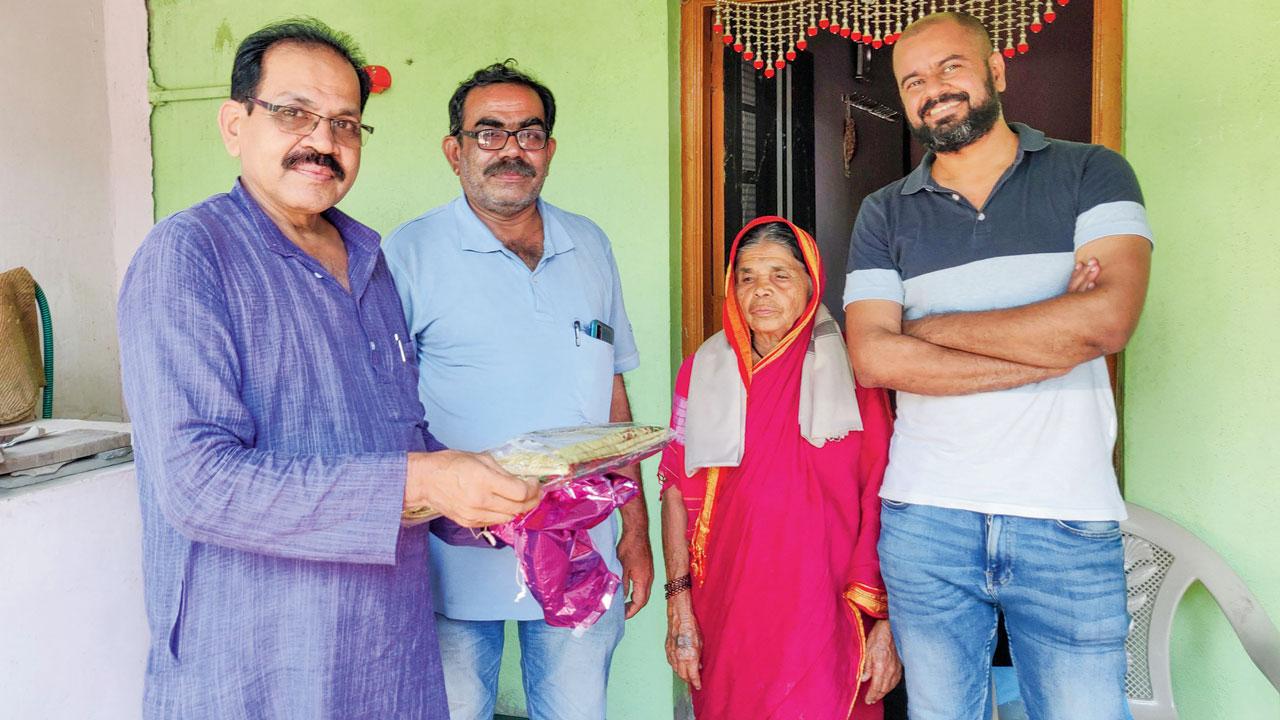
Shahu Patole with his brother and mother and translator Bhushan Korgaonkar at the former’s home in Khamgaon, Osmanabad
It’s been close to a decade since he originally published his work. Still, in all these years and despite the democratisation of content on the internet, which allows for different food narratives to exist, the general attitude hasn’t changed. “To this day, what you eat dictates where in the caste hierarchy you are placed,” says Patole, traditionally a beef-eating Hindu. “I have documented our food culture for future generations for anthropological value and to shed light on how we were treated in the village, but people feel there is no need to write about these practices because they are no longer followed.” Moreover, it is the educated Dalit, he notes, who feels this guilt more acutely. “There is guilt around the fact that their forefathers used to eat this type of food.” Many have changed their eating practices and have even accepted vegetarian food, he says, and yet have to contend with the immutability of the caste burden. “You can protest all you want that you have stopped eating certain foods, but has the label of caste left you?” he asks.
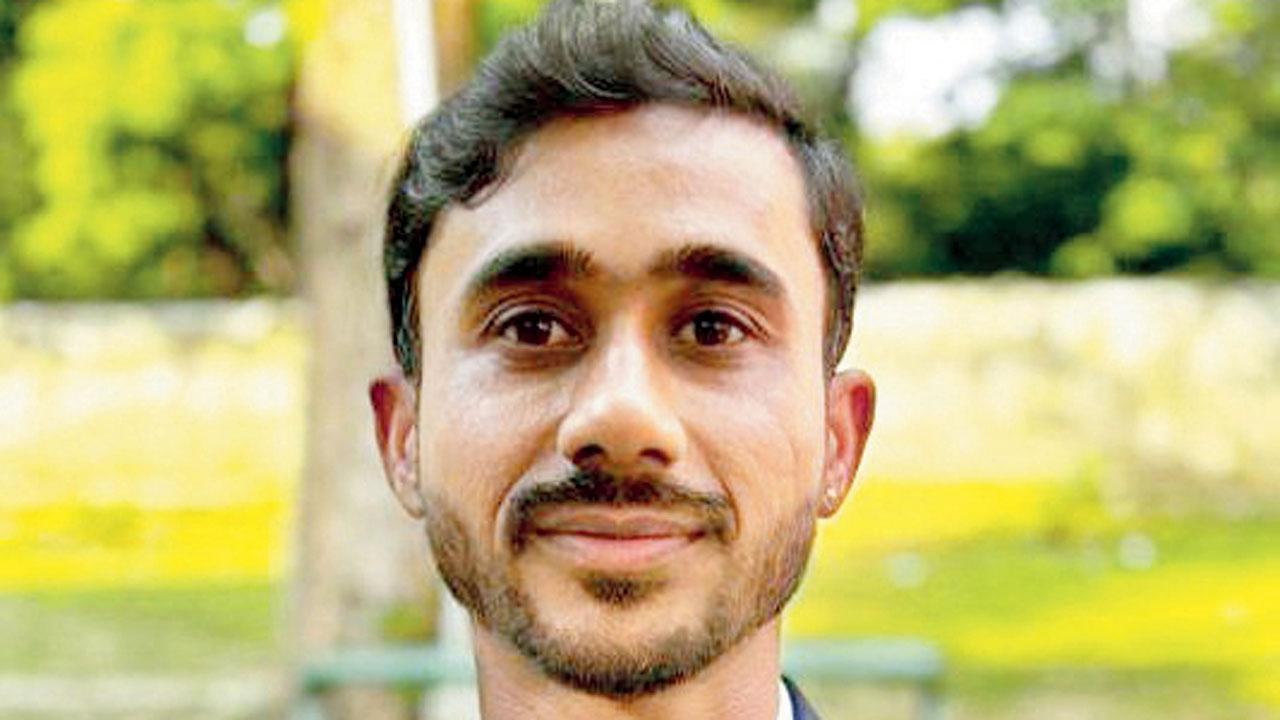
Prashant Ingole
Korgaonkar, who read, Isn’t This Plate Indian?—Dalit Histories and Memories of Food, a project undertaken by the University of Pune’s 2009 Gender Studies class, in preparation and recalls inviting Patole in 2016 to Mumbai for a curated session on his book, worked for close to a year on several drafts with his team, pairing them with lengthy conversations with the author to ensure “nothing was left out, misinterpreted or misrepresented.” The translator, who also works closely with Lavani artistes, believes that the English translation will have a wider reach. “With such marginalised work [and I have observed it in Lavani also], people may not be able to experience it fully in the original language because of familiarity and hence may not actively engage with it. However, when the material is available in another language, there may be curiosity to read it. I think the English translation may even give a fresh perspective to readers of Marathi.”
Shahu Patole, on the other hand, is clear about his hopes from this English translation. “I wrote about two castes—the Mahars and Mangs. Other Dalit castes should also come forward to talk about their food histories openly. My book should inspire them to do the same about their own food cultures. We are not responsible for what we had to eat. Why should we feel ashamed? Those who compelled us to eat it are the ones who should be ashamed.”
The spice factor
A meal with barbat and alani mutton curries, rice and bhakris. For alani mutton, meat pieces are marinated with turmeric, salt, ginger, garlic and coriander leaves (if available). Very little oil (or the mutton fat) and chopped onion are added to the marinated pieces. A water lid is kept (this technique is used across the state where the vessel is covered with a lid with water in it; extra water is not added to the ingredients, and the curry is allowed to cook on steam). When the pieces release water and are half cooked, this hot water on the lid is added to the preparation and this process is repeated till the mutton is cooked. This alani (literally meaning bland) mutton is often made for children or the sick.
Barbat is any meat gravy cooked for a religious occasion after sacrificing the animal. In it, all parts of the animal are used. Yesur (a masala mix powder comprising dried red chillies, dried coconut, dried onions and garam masala ingredients like coriander seeds, cumin seeds, fennel seeds, cinnamon, cloves and pepper) is mixed with roasted jowar flour and salt in water and added to the alani mutton, cooked till it starts boiling, and then garnished with coriander leaves.
Both recipes can be prepared with any meat.
 Subscribe today by clicking the link and stay updated with the latest news!" Click here!
Subscribe today by clicking the link and stay updated with the latest news!" Click here!








